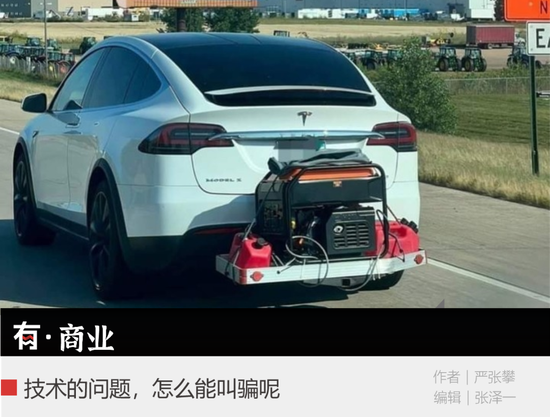
Every winter when returning home, it is the hardest-hit area for electric fathers to show up.
After all, there are various big V actual measurements. Under the temperature of minus 20 degrees, the actual battery life of more than 70% of the models does not even reach half of the official battery life.
The cruising range is the most complicated and profound issue in the entire new energy vehicle industry. You can never imagine what car companies will do to increase the cruising range.
01
Batteries: Sources of Energy
For the same fuel vehicle, the 60L fuel tank must run farther than the 45L one. But the problem with electric vehicles is that the size of the battery pack cannot be expanded indefinitely. On the one hand, it is a cost issue, and on the other hand, it is weight.
Therefore, for power batteries, the core indicator for evaluating the technical level is “energy density”.
There are two main factors affecting energy density: battery material and battery structure.
On the material side, ternary lithium batteries and lithium iron phosphate batteries are the mainstream choices. Taking the Ningde era CTP 3.0 battery pack as an example, the energy density of the ternary system Kirin battery system can reach 255Wh/kg, far exceeding the 160Wh/kg of the lithium iron phosphate system.
However, in terms of actual loading volume, the market share of lithium iron phosphate batteries is gradually surpassing that of ternary lithium batteries. The reason is cost.
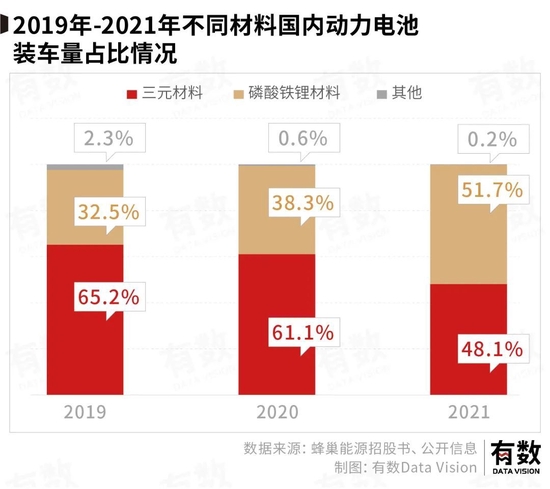
The cost per unit of lithium iron phosphate is 20% lower than that of ternary lithium. At the same time, the service life of lithium iron phosphate batteries is longer, that is, the battery life declines more slowly.
On the other hand, lithium iron phosphate is superior in safety, which means that there are more possibilities for “subtraction” in the battery structure. For example, BYD’s blade battery has increased the volume utilization rate of the battery pack by 50%, allowing more batteries to be placed in it, increasing the energy density as much as possible while occupying the same space.
Another way of thinking is to increase the energy density on the basis of the same weight. For example, the CTP products of Ningde era increased from 1.0 to 3.0, and the ternary system increased from 180Wh/kg and 200Wh/kg to 255Wh/kg.
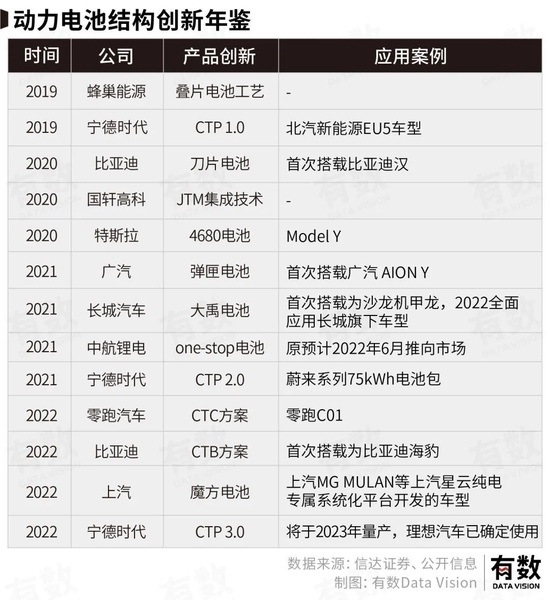
In the perception of consumers, the difference between batteries often lies in the fact that lithium iron phosphate batteries lose power faster in winter, and the batteries are weaker due to frequent charging and loss.
Batteries, on the other hand, merely provide an energy source for electric vehicles. As the saying goes, Maxima also needs Bole. The actual battery life of a car depends on the tuning ability of the car company itself. Putting it on a fuel car is called “fuel consumption”, and putting it on an electric car is called “energy consumption”.
All battery life scams are essentially caused by car companies regardless of energy consumption.
This is where the major car companies show their talents.
02
Aerodynamics: drag from the outside
Small wooden blocks in physics textbooks can slide on a smooth and frictionless surface, but new energy vehicles cannot.
According to calculations, on a level road, when the speed of the vehicle reaches 110km/h, the wind resistance increases continuously, and can account for up to 80% of the total resistance of the vehicle.
Therefore, the primary goal of car companies to reduce resistance is on wind resistance.
An important criterion for measuring the impact of wind resistance on a car is a mathematical parameter determined through wind tunnel experiments and slide experiments, namely the drag coefficient. It is estimated that for every 0.01 reduction in the drag coefficient Cd value of a pure electric vehicle, the driving range can be increased by 5-8km.
Generally speaking, the drag coefficient of a car is a constant, which is only related to the shape of the object, which is one of the most important reasons why car companies rack their brains for concave shapes. For example, one of the purposes of Tesla’s 2021 facelift is to reduce wind resistance. The drag coefficient of the 2020 Model S is 0.24Cd, which is reduced to 0.208Cd by the 2021 model.
Calculated according to the above values, this change can increase the battery life by 20-30km, or plug in more parts.
At present, Mercedes-Benz EQS has the lowest drag coefficient in the world, with a drag coefficient of only 0.20Cd.
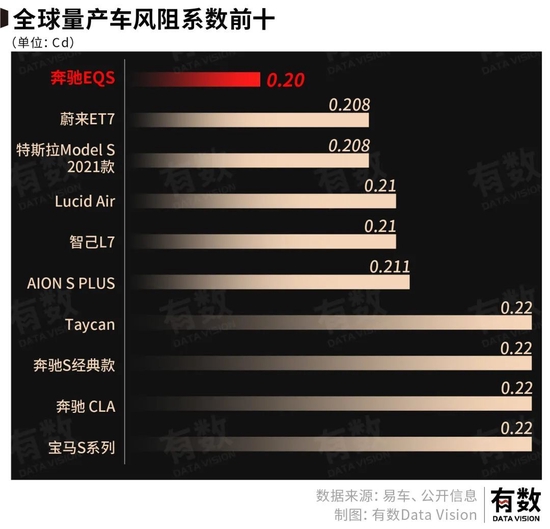
If you look closely at the models on the list, you can find that the entire body is a “drop-shaped body” without exception. After all, water droplets are the shape with the smallest drag coefficient without violating the laws of physics.
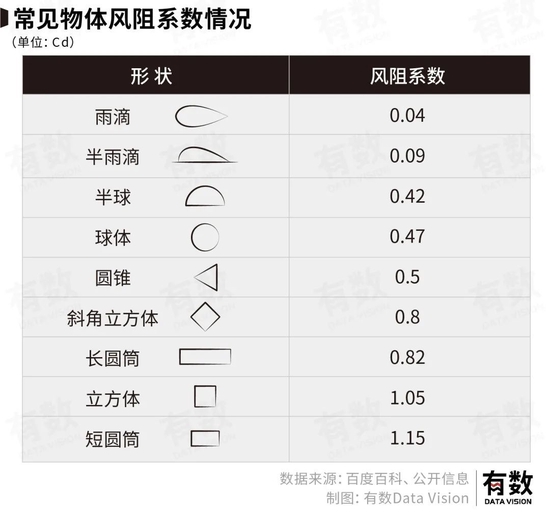
The models we are familiar with, such as Tesla Model 3, Xiaopeng P7, Seal, Leap C01 and other coupes, have a drop-shaped body as a whole, or they are “rounder” when viewed from the front.
In addition to the concave shape, the hidden door handle that is complained by most car owners is actually to reduce wind resistance and improve battery life.
According to calculations by relevant agencies, each hidden door handle can reduce the drag coefficient by about 0.003, and 4 is 0.012, which can increase the battery life by about 6-9 kilometers—fly legs are also meat.
At present, there are mainly three types of hidden door handles, rotating hidden, pressing hidden, and electronic induction. No matter what it is, passengers who call this kind of car for the first time on Didi are often confused.
There is also a problem that car owners in Northeast China can empathize with—at the end of 2020, a Tesla car owner in Northeast China complained on social media that a light snowfall froze Tesla’s push-type hidden door handle, making the door unable to open. For another example, in 2018, one of the first NIO car owners reported that due to a malfunction in the ES8 car system, the door handle could not be ejected, resulting in the child being locked inside the car. In the end, the car owner could only open the car door in a “non-destructive” way.
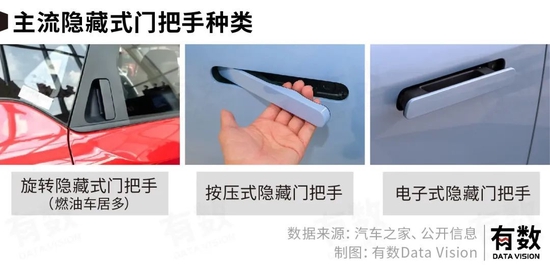
In addition to hidden door handles, the appearance of the car has no small impact on battery life. For example, Jikrypton 001, through 11 technical optimizations, has increased its battery life by 55.8 kilometers, and Weilai ET7 has improved its battery life by 61.8 kilometers through 13 technical optimizations.
In short, it’s all about details, all about learning.

So, when something about an electric car’s design is puzzling, it’s likely that it’s intended to increase range.
03
Automobile lightweight: resistance from itself
India’s GoAir Airlines has a standard for selecting stewardesses: slim figure is preferred.
It’s not about objectifying women, it’s about saving fuel—according to GoAir, every extra kilogram of weight in flight costs 0.05 cents an hour more.
You can never imagine what airlines can do to save fuel. Japan’s ANA will advise passengers to go to the toilet before boarding to reduce weight, and changing the first-class tableware from metal to plastic can also save a lot of fuel. If you see an aircraft with paint scraped off at an airport, it’s probably also for fuel savings.

It is a bit difficult for car owners to become BM girls, so car companies will find ways to reduce the weight of electric cars. According to a survey by the European Aluminum Association, the body weight of new energy vehicles is reduced by 10%, energy consumption is reduced by 5.5%, and the cruising range can be increased by 5.5%.
In fact, due to the incremental components such as the three-electric system (the weight of the three-electric system increases by about 200-300kg), the overall quality of new energy vehicles of the same level will be higher than that of fuel vehicles.
Therefore, in response to the issue of lightweight car bodies, car companies have proposed that the material side be based on aluminum alloy, and the process side be based on integrated die-casting technology. The two complement each other and reduce weight together.
On the material side, the current exploration direction mainly includes advanced high-strength steel, aluminum alloy, and carbon fiber composite materials, which can replace mainstream low-carbon steel, which can reduce weight by 25%/40%/60% respectively.
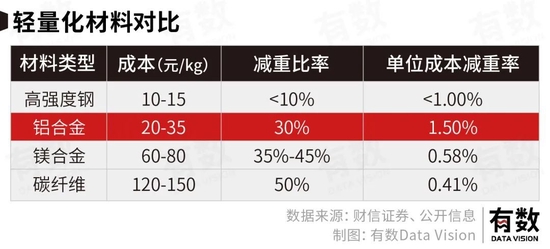
As shown in the figure, there is only one main reason why aluminum alloys can stand out at the moment: high cost performance.
According to the calculations of the International Aluminum Association, the aluminum consumption of pure electric vehicles in 2019 is 143kg, and it is estimated that the aluminum consumption of new energy bicycles will reach 227kg in 2025, an increase of over 55%.
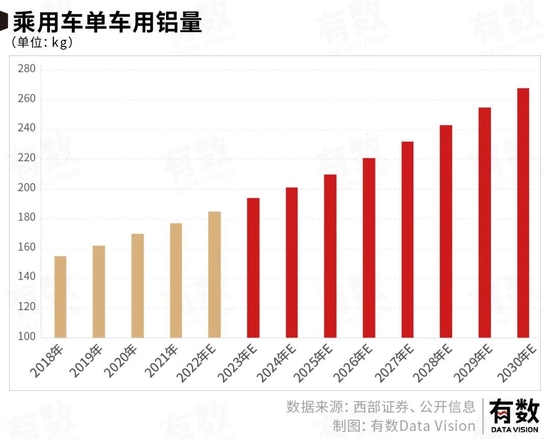
But the change in material has brought new problems: aluminum is not easy to weld. Therefore, integrated die-casting technology has become a popular project on the craft side, just look at the rise of A-share related concept stocks.
Take Tesla as an example. On the Battery Day in September 2020, Tesla announced that the rear floor of Model Y will adopt integrated die-casting, which reduces 79 parts compared to the original one. Due to the reduction of welding points and material loss, etc. factors, reducing manufacturing costs by nearly 40%.
With Tesla as the guide, car companies at home and abroad have also begun to join the ranks of integrated die-casting.
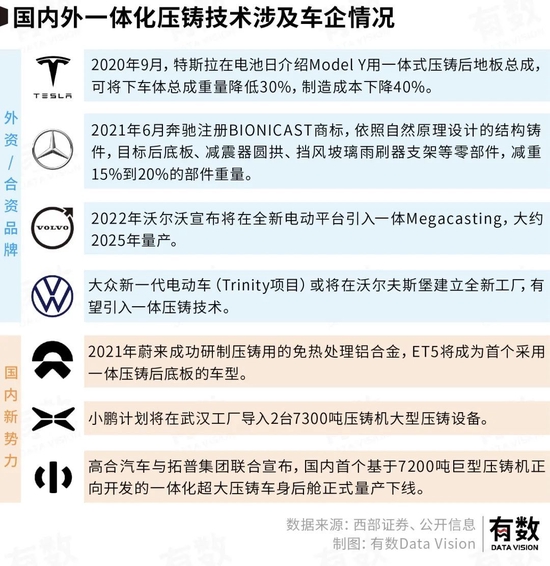
There are probably only so many main factors affecting resistance. If you want to increase battery life, you need to think of other ways.
04
Kinetic Energy Recovery: Defeating Magic with Magic
In 2020, a Model S car owner circled the Chinese border. When passing through no-man’s land and unable to charge, he used the kinetic energy recovery system to charge the car. According to the owner of the car, he used the kinetic energy recovery system to let the large truck tow the car for 60-70 kilometers to fully charge the battery.

The so-called kinetic energy recovery refers to a technology that converts wasted energy into electrical energy and stores it in the battery during deceleration. The principle is similar to the push-type flashlights often sold on green leather trains, but the technical threshold is very different.
In terms of hardware, there are two key factors that affect kinetic energy recovery, one is the maximum power of the inverter; the other is the battery capacity. The former is equivalent to the size of the bottle mouth, and the latter is equivalent to the capacity of the bottle body.
The function of the inverter is to convert the AC power generated by kinetic energy recovery into DC power that the battery can store. The greater the conversion power of the inverter, the faster it can charge the battery. The maximum kinetic energy recovery power of Porsche Taycan is 265kw, which is equivalent to charging it with two fast charging piles at the same time.
The role of the battery is to store the DC power converted by the inverter. The larger the battery capacity, the more power it can store. This is also the fundamental reason why the kinetic energy recovery system of hybrid models cannot beat pure electric models.
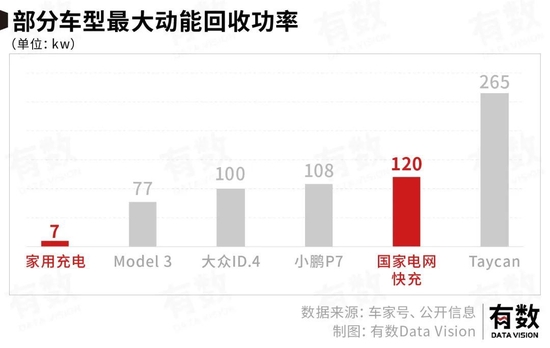
In terms of software, the impact on the efficiency of the kinetic energy recovery system is mainly related to the calibration strategy of the car company. Simply put, it’s how related the system is to the switches or brakes. It is also the most intuitive impact that car owners feel. This is also the main reason why old drivers are not used to driving new energy vehicles.
There are currently two mainstream solutions, one is associated with the switch; the other is associated with the brake.
Associated with the switch, that is, Tesla’s single-pedal mode. Release the switch and you will feel the brakes. In an ideal state, you only need to press the switch and one pedal. The advantage of this mode is that it recovers more energy, but the disadvantage is that accidents are prone to occur due to changes in driving habits.
After getting used to the single pedal, the driver will get used to putting his foot on the accelerator pedal. If there is an emergency, he may forget to step on the brake. In addition, since there is no connection with the brakes, the brakes after the kinetic energy recovery system is involved will not remind the rear owner through the brake taillights, which may easily cause rear-end collisions.
Based on this, an up owner at Station B installed a brake taillight on his car.

Based on the problems with the single pedal, some car companies have chosen a solution that is associated with the brake or coexists with the two. The advantage of this solution is that there are fewer changes to the driver’s driving habits, which reduces the probability of accidents. But the disadvantage is that the recovery efficiency is relatively low and the technology is difficult. It takes a lot of time to adjust the brake pads to balance the kinetic energy recovery system and mechanical brake.
At present, the balance between recycling efficiency and safety is similar to the two ends of the balance, and it is difficult to achieve both. Only the majority of drivers and friends should be vigilant, and don’t forget the beatings and scoldings of the driving school coaches.
05
end
So how much battery life can solve people’s anxiety about using electricity? There is a formula to try and measure.
As shown in the figure below, just bring their respective actual conditions into it. For example, for office workers who expect to be charged weekly, assuming that they drive an average of 40km a day, they can buy a car with a battery life of 505km to avoid anxiety about power consumption; if they drive an average of 50km a day, Then you have to buy a 630km.
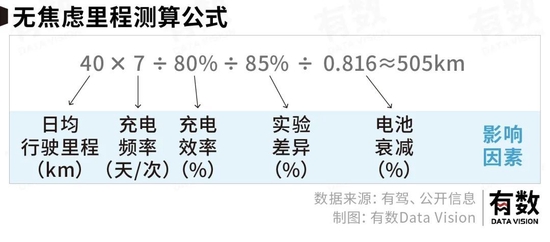
Charging efficiency means that it needs to be charged when there is still 20% of the remaining power, and battery attenuation means that the battery will decline to 81.6% after 8 years
Battery life anxiety has long been a key issue that has plagued the popularization of new energy vehicles. In the past few years of high-intensity technological competition, both the battery life and the fuel-saving magic of car companies have leapfrogged compared to when new energy vehicles were first popularized. style of development.
Musk said at the beginning of the year that Tesla could build an electric car with a range of more than 600 miles (1,000 kilometers) a year ago, but “it doesn’t make any sense.” He believes that the battery life of more than 400 miles (643 kilometers) will not be used by users in 99.9% of the scenarios. On the contrary, it will also lead to a larger battery pack, affecting the handling of the vehicle.

At present, the biggest constraint on the battery life of new energy vehicles is actually the difficulty of charging caused by insufficient charging facilities.
Fuel vehicles do not have mileage anxiety. That is not the advantage of fuel vehicles, but the advantages of PetroChina and Sinopec.

[1] The trend of automobile lightweight is clear, and the integrated die-casting of structural parts promotes the manufacturing revolution, Western Securities
[2] Automotive lightweight and integrated die-casting has become a trend, Caixin Securities
[3] Power battery structure innovation contends among hundreds of schools of thought, Cinda Securities
[4] Honeycomb Energy Prospectus
[5] What is the relationship between battery energy density and cruising range? Huge LARGE
[6] The battery life of electric vehicles depends on it! A comprehensive understanding of the “energy density” of power batteries, an automotive reporter
[7] Announcing the drag coefficient of the vehicle alone is just playing hooligans! Cold knowledge of vehicle exterior design that you don’t know, understand the car emperor
[8] With so many painful lessons, car companies should use less hidden door handles, Baidu News

(Disclaimer: This article only represents the author’s point of view, not the position of Sina.com.)
This article is reproduced from: https://finance.sina.com.cn/tech/csj/2022-12-28/doc-imxyfkce3761913.shtml
This site is only for collection, and the copyright belongs to the original author.